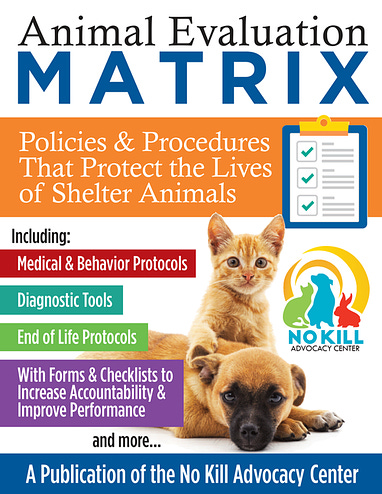BareFootPets supports and embraces Nathan Winograd’s moral position on sheltering in the U.S. We are always happy to pass on some of his posts, such as this one below, casting a spotlight on the heartbreaking failures of our nation’s shelter system to serve and actually protect the animals in its care. We highly recommend following Nathan’s blog articles on the subject. Click on any link within the post below to go to his site and sign up.
When it comes to dog behavior, you can’t believe everything you hear or see
| Nathan J. Winograd Jan 3, 2023 RePublished In Full With Acknowledgment to Author Nathan J. Winograd |
Not long ago, Oswald, my dog, was playing with two other dogs. It was loud, mouthy, physical, and pure joy. But to the uninitiated, it looked and sounded rough. In fact, an employee at the facility we were visiting ran over to see if everything was ok because they had a report that one dog was “attacking” another dog and that a “pit bull” was involved. It was not only all play, but the dogs involved were Oswald, a Boston Terrier mix, and two Jack Russell Terriers. The experience underscores how easily people misidentify dog behavior and, consequently, how thoroughly shelters fail dogs when they are surrendered (ostensibly) for “aggression” or “behavior.” ¹
Too many shelters immediately kill dogs when surrendered for “aggression” or other “behavior problems.” They label them “unadoptable” based on the claims of the person surrendering them without a thorough, independent investigation. These facilities may falsely claim they are either No Kill or making progress toward No Kill. But shelters that do this are not No Kill. And more broadly, they are thoroughly failing dogs.
People misinterpret behavior
Numerous studies have found that,
The ability of owners to correctly identify canine behavior is poor, despite most dog owners rating their understanding of dog behavior highly. Therefore, relinquishment is likely to at least partially reflect the owner’s perception that a behavior is a problem, due to unmet expectations or a disparity between owner lifestyle and the needs of the dog, rather than simply canine behavioral disorders.
For example, “Barking and growling are not isomorphic [synonymous] with ‘aggression,’” writes the editor-in-chief of the Journal of Veterinary Behavior: Clinical Application and Research. Nor are mouthiness and other behaviors typically labeled as “resource guarding” behavior, “jealousy,” or “aggression.” Often, the dog is just seeking information:
When dogs ask questions of and gain information… in active interactions, tactile exchanges are frequent and complex, often involving mouthing, an activity that humans both misunderstand and actively discourage.
Dogs are asking questions to understand their environment in the only way their biology allows — through a complex series of barking, growling, tail wagging, posturing, and mouthing. And because we don’t understand those complex interactions, we often falsely conclude they are acting “aggressively.”
In addition, there are cases of people falsely claiming the dog has behavior problems to alleviate guilt for surrendering their dog; disgruntled neighbors and estranged spouses who surrender dogs out of spite, and bites that turn out to be provoked or an accident. As such, shelter staff must view public accounts of “behavior” with a healthy dose of skepticism.
Shelter staff misinterprets behavior
They must also weigh in-shelter evaluations similarly. When shelter staff evaluate dogs, they must consider that dogs are under duress in shelters and often act in ways dissimilar to their behavior outside of the shelter. This evaluation must also account for the fact that these dogs have experienced recent trauma (including separation from their families). The process must also rule out a medical origin for the perceived behavior. Finally, it must explore all possible solutions and alternative placements.
One analysis of two of the most popular temperament tests for aggression used in shelters found that their predictive ability was no better than a coin toss. Add shelter staff who don’t care about killing dogs, are explicitly hired to kill dogs, and actively look for reasons to kill dogs, and many dogs don’t stand a chance.
By contrast, shelters that do not use temperament testing as a “pass/fail” proposition demonstrate that 90% of dogs who failed a temperament test and were sent to a trained foster home for further evaluation and behavior modification were rehabilitated and safely adopted. This included dogs with barrier reactivity, fear-based aggression, resource guarding, kennel stress, prey drive, and bite history. Some dogs also had secondary issues, including extremely high energy, possible dog aggression, dog selectivity, fear of men, undersocialization, separation anxiety, and reactivity. In the end, the percentage of dogs who are a threat to public safety is incredibly low, amounting to less than ½ of 1% of all shelter intakes. As such, even when some form of “aggression” is involved, it can almost always be rehabilitated.
Making shelters fair to dogs
So how can shelters protect dogs and people? How can shelter staff feel confident they are doing everything possible for every single animal every single time?
In addition to group housing, dog-dog play, toys, walks, human socialization, visual access outside their kennels, the ability to smell and touch people, and music with soft human voices, The No Kill Advocacy Center, my organization, has developed an “Animal Evaluation Matrix” that includes behavior protocols, with forms and checklists to increase accountability and improve performance. These protocols were created in collaboration with some of the most successful shelter directors in the country — directors running municipal and animal control-contracted shelters with 99% placement rates for dogs.
For example, after the Matrix was implemented in one municipal shelter that takes in 6,000 dogs a year, behavior killing dropped sevenfold to less than 1%. At the same time, despite an increase in the placement rate of 42%, a 21% increase in human residents, and a growth in the overall number of dogs in the community, serious dog bites declined communitywide by 89%. The Matrix works!
Anything less, including killing a dog based solely on reported history, is a gross betrayal. It is inconsistent with a mission of animal protection. And it cannot be justified under a (false) mantle of public safety.
________________________________
Fn1 The report of “aggression” involving a “pit bull” also shows why relying on press and public accounts of dog bites is grossly unfair, especially to “pit bulls.” Breed identification of pit bull-type dogs by shelter staff and veterinarians have been shown to be unreliable. In particular, 50% of dogs labeled as pit bulls lacked DNA breed signatures of breeds commonly classified as pit bulls. Other studies found misidentification by “experts” at even higher rates. If the so-called “experts” are so often wrong, relying on lay people’s breed descriptions is thoroughly arbitrary. But even when they do get it right, the breed of a dog indicates how they look, not how they behave. Dogs targeted for breed-discriminatory laws are not more likely to bite, do not bite harder, and breed-discriminatory laws do not result in fewer dog bites or bite-related hospitalization rates. In addition to killing dogs who have done nothing wrong, enforcement is expensive with no measurable impact on public safety.
To receive future articles and support my fight for the animals, please subscribe.
* * * * * * * * * * * * * * * * * * * * * * * * *
God Bless and Happy Pet Parenting!
With love and good wishes,
jeannie.
About jeannie: I’ve been pro-actively involved in pet rescue all of my life. I founded Milagro Senior Pet Refuge© (Phoenix) in 1998, and BareFootPets (TM) in 2008. Animal welfare has always been and will always be my heart’s work. If my only legacy is that I save a handful of precious souls that would not survive otherwise, I’m good with that.



